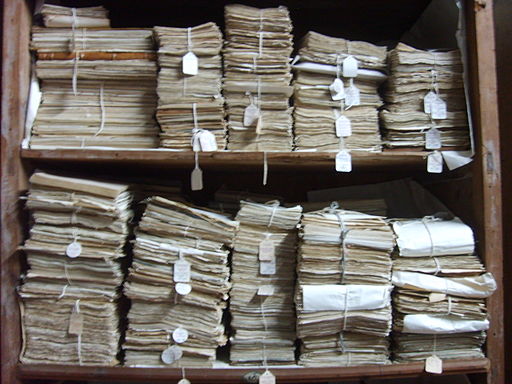I’ve been re-reading Katherine Govier’s 1987 novel Between Men. The protagonist Suzanne Vail is a young historian who has moved back to Calgary after a decade in Ontario. Her marriage is crumbling and her beloved, oil-hungry hometown is exasperating to live in. When she’s not teaching Canadian history at a local college, Suzanne works on a secret research project: piecing together the murder of Rosalie New Grass. This young Cree woman, Govier explains in the acknowledgements, was killed in Calgary in 1889.
Among other things, Between Men is about a writer making sense of history. How does she find her way beyond the incomplete historical record? What bearing does the past have on her life in the present?
As a writer of creative nonfiction, I was captivated by the moment early in the novel where Suzanne crosses genres.
Here, we see her struggling against the constraints of her scholarly discipline.
“Suzanne raised her head from the greyed papers, frustrated. Newspaper accounts were notoriously bad sources, even if she could make out the words. Facts, she needed facts, the hard centres in this fatty flesh of description, but there were few. Few facts and many accounts, here and elsewhere, the story of the story, impossible to verify, leading her this way and that. Fact, the supposedly irreducible thing, was not so easily preserved.”
How will she burrow back in time?
“Suzanne needed a way in... She needed a guide, a torch, a pick-axe. Something, or someone.”
And in her stacks of research, she finds him.
“He was a spectator to the entire sequence of events… He was always there but never mentioned, the invisible man… This man had a name of course. But Suzanne did not, for the moment, write it down. Instead she pondered on what she knew of his characteristics.”
This man could be useful to her, but she would have to breach the historian’s rules.
“She would have to make assumptions, to invent. But she was sure that if she did, this man would be her vehicle to carry her past the great century behind her. He could cut through the intervening rings of darkness and light, the banal seasons of freeze and thaw, as if it were not time but more geography. But if he were to be the means for this ungeographical journey, and she to follow him, she would have to make him her own.”
In this moment, Suzanne finds the sweet spot of creative nonfiction.
“She stroked out his real name on her copies of the papers. She would call her man – what would she call him? She put the end of her pencil in her mouth, and though. She would call him Murphy.”
In Between Men, the making of creative nonfiction is a clandestine, renegade act. Suzanne knows her project is risky, that she will pay a price for imagining between the grey archival pages of the past. But the reimagined story of Rosalie New Grass’s murder tugs the writer and the reader into a new interstitial space of invention constrained by fact. The sweet spot where the past comes alive in the present.
